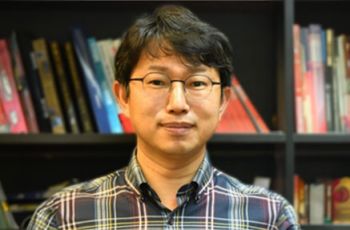
SEH Lehman Auditorium, B1220
School of Engineering & Applied Science
800 22nd Street, NW Washington, DC
Featuring
Dr. Ki-Uk Kyung
Associate Professor, Dept of Mechanical Engineering, KAIST
Visiting Professor, NYU Tandon School of Engineering
In recent years, the emergence of flexible technologies, including stretchable and bendable wearables, consumer electronics, and soft electromechanical devices like soft robots, has driven the demand for soft body elements and user interfaces in these systems to bolster their mechanical resilience against deformation. Electroactive polymers (EAPs) have surfaced as one of the most promising materials for implementing flexible actuation mechanisms due to their lightweight nature, inherent flexibility, freedom from geometric constraints, cost-effectiveness, and ease of miniaturization. Nonetheless, the primary drawback of these actuators lies in their inherent softness. To address this limitation, ongoing efforts are dedicated to enhancing the mechanical power of soft EAP actuators while preserving their advantageous characteristics. When configured as thin films, soft EAP actuators exhibit the potential to broaden their applications, particularly in the realm of tactile feedback interfaces for flexible touchscreens, Braille devices, and wearable tactile technology. This versatility positions them as prime candidates for wearable haptic devices. Furthermore, soft actuators have catalyzed a paradigm shift in artificial muscles, biomimetic robots, and miniature mechanical devices, transcending their role as tactile interfaces, thanks to substantial advancements in their output capabilities. One notable strength of soft components lies in their exceptional reconfigurability, exemplified by deformable fingers in robotic grippers, showcasing how soft components excel in handling objects of varying shapes. This discussion also delves into the existing challenges hindering the practical integration of soft actuators into innovative soft human-machine interfaces.